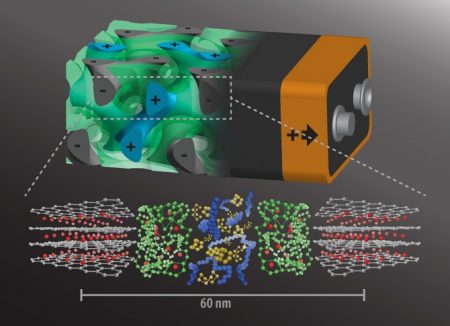May 23, 2018 – In an article appearing this month the journal, Energy and Environmental Science , Cornell University researchers report on a revolutionary nanoscale battery architecture capable of creating a higher power density in a much shorter time than conventional lithium-ion batteries exhibit today.
The key is shrinking the battery elements to nanoscale so that by the time you plug the recharge cable into a power outlet the charge is instantaneous. The architecture is based on block copolymer self-assembly. Joerg Werner, a lead author of the article, proposed to take work he was doing on “self-assembling filtration membranes” and applying “the same principles to carbon materials for energy storage.”
In an article appearing in the May 16, 2018 issue of the Cornell Chronicle, Tom Fleischman describes just how the nanotechnology of the battery’s architecture was conceived.
“The gyroidal thin films of carbon – the battery’s anode, generated by block copolymer self-assembly – featured thousands of periodic pores on the order of 40 nanometers wide. These pores were then coated with a 10 nanometer-thick, electronically insulating but ion-conducting separator through electropolymerization, which by the very nature of the process produced a pinhole-free separation layer.”
The nanofabrication technology currently is in proof of concept is not without potential problems. It appears that discharge and recharge cycles gradually degrade making parts of the battery inaccessible for reuse. But the promise of a lithium-ion battery that charges in seconds makes this work at Cornell exciting. So much so that the engineers involved have applied for a patent.
If the proof of concept can turn into a real product this means lithium-ion batteries because of the nanoscale architecture can decrease in size by orders of magnitude. And at the same time, the instant charge capability will alter consumer electronics, sensors, electric vehicles, the power industry, robotics, and any other industry sector where instantaneous energy from stored devices would be advantageous.









